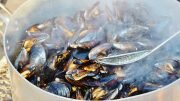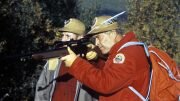Prepared for another season with head lice hunt
A school year also means a season for hunting for head lice. The Norwegian Institute of Public Health performs a survey to see how the situation has developed.
In week 35, The Norwegian Institute of Public Health (Folkehelseinstituttet) implores families who have children in school and kindergarten to check for lice.
If many checks at the same time, more people may discover that they have head lice and thus be treated. That can significantly reduce the plague and the risk of infestation.
Both children and adults can have head lice, but it usually occurs for children. The Institute of Public Health emphasizes that head lice is not about lack of cleanliness, because it also survives in hair that is washed frequently.
Lice infection occur most frequently when the lice creep from one person to the other when heads are touching or by swapping headgear.
Louse combs
Head lice suck blood from the scalp, and the bites can cause itches. The lice are only 2-3 millimetres in length. The feet have claws that allow the lice to easily cling to hair. The eggs are likewise attached to the hair.
Itching of the scalp may be a sign of head lice, but not everybody with an infestation experience itching or it may take some time before it starts itching.
Checking for lice is performed by using a specially designed lice comb. Put a white towel over the shoulders and groom moist hair using a close toothed comb. Afterwards, you check both comb and towel for lice and eggs.
When head lice are detected, treat with a lice unguent. Normal hair wash does not kill the lice or its eggs.
Examination
At the same time as the head lice campaign next week, the Norwegian Institute of Public Health performs a survey on the magnitude of the pest.
– We conducted the same survey in 2008 and are looking forward to comparing the result and finding out how the situation has evolved over the last ten years, says Project Manager for the study.
All the pupils at 41 primary schools in Oslo, Bergen, Trondheim, Bodø and Tromsø are invited to participate in the survey. These are the same schools that participated ten years ago.
The survey is based on that every person in the household must be combed using lice combs. Any lice that are found must be submitted to the Public Health Institute in a bag.
The aim is that the survey should provide more knowledge which can help reduce the occurrence of head lice in Norway.
© NTB scanpix / #Norway Today


